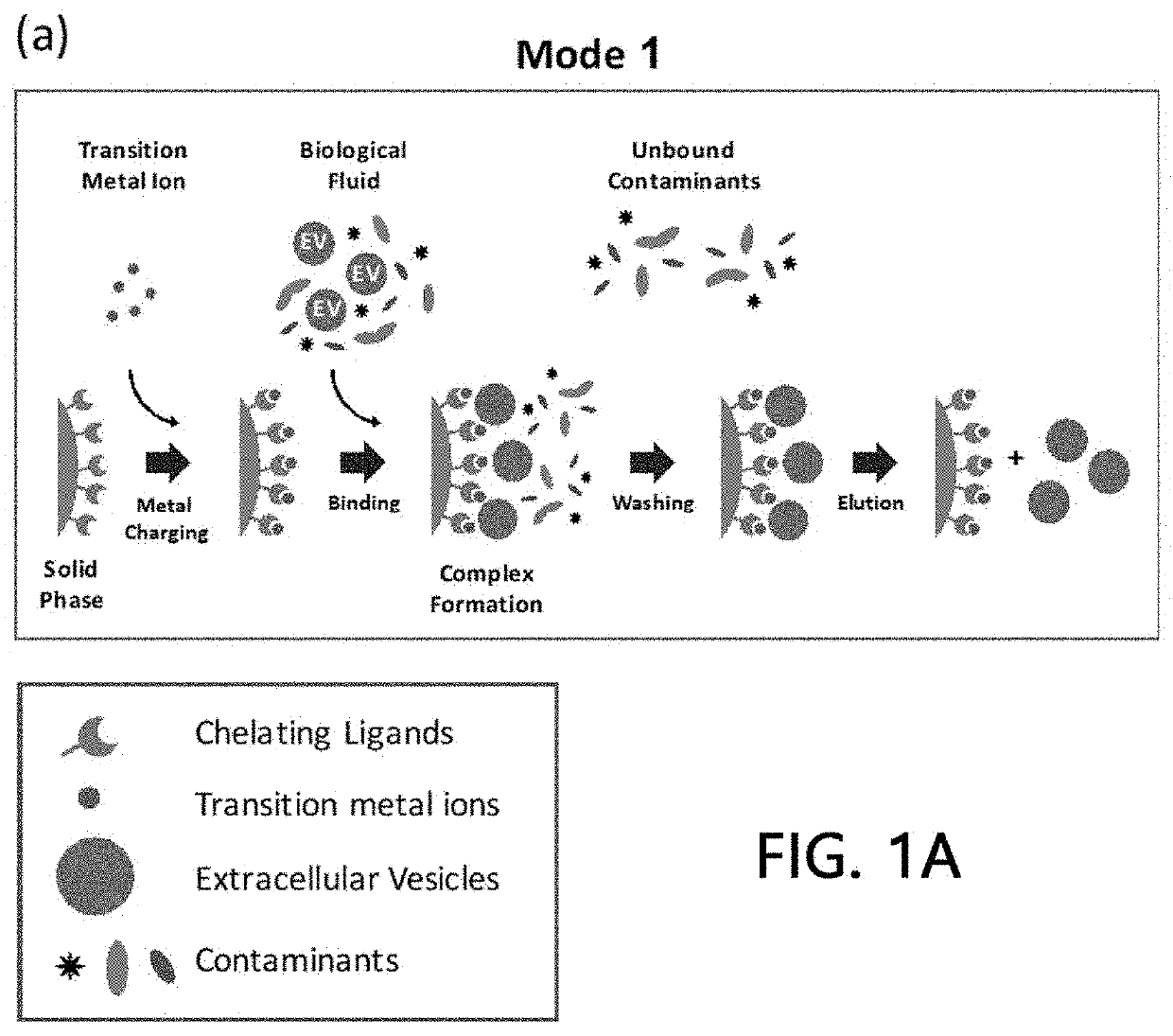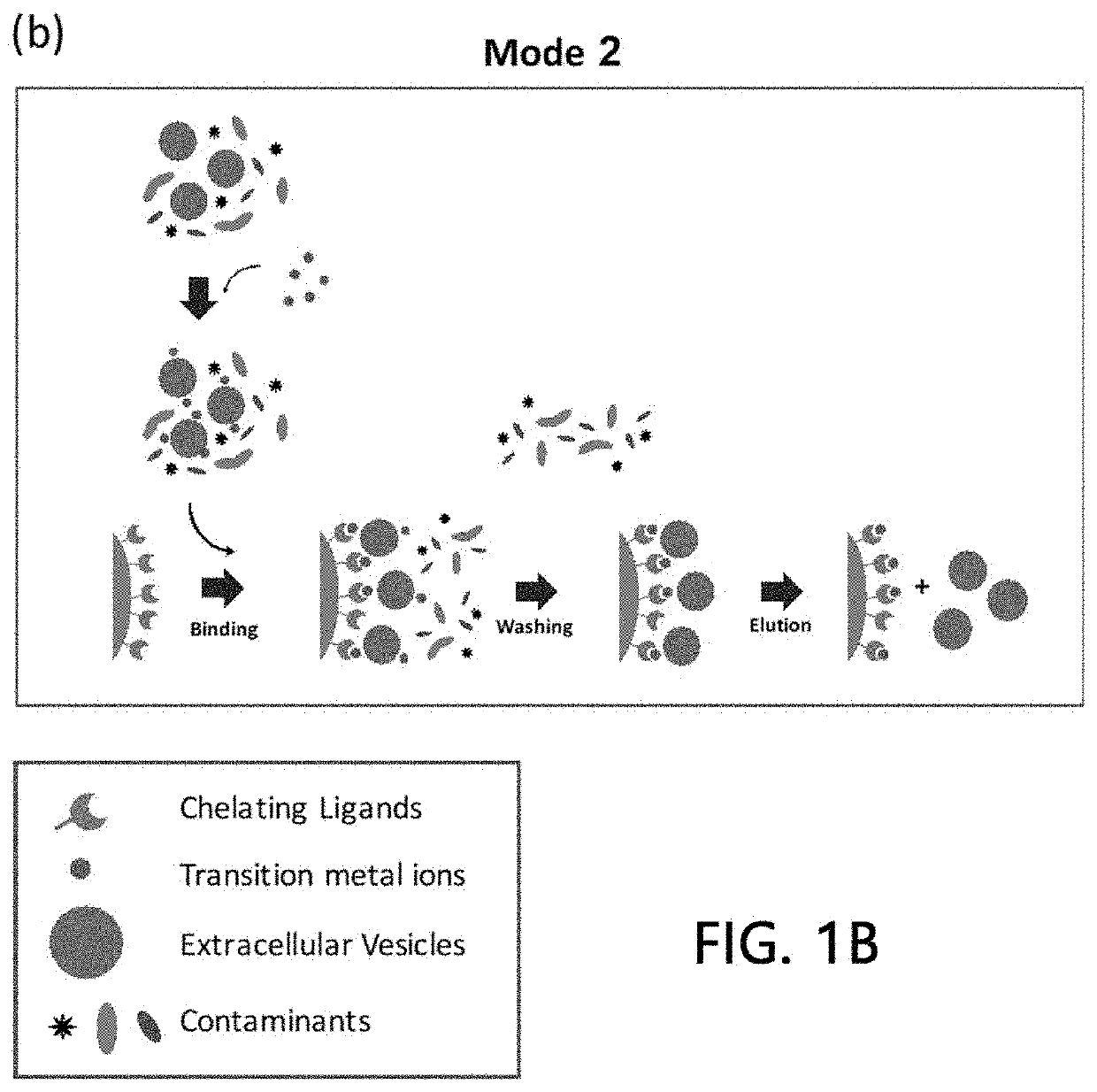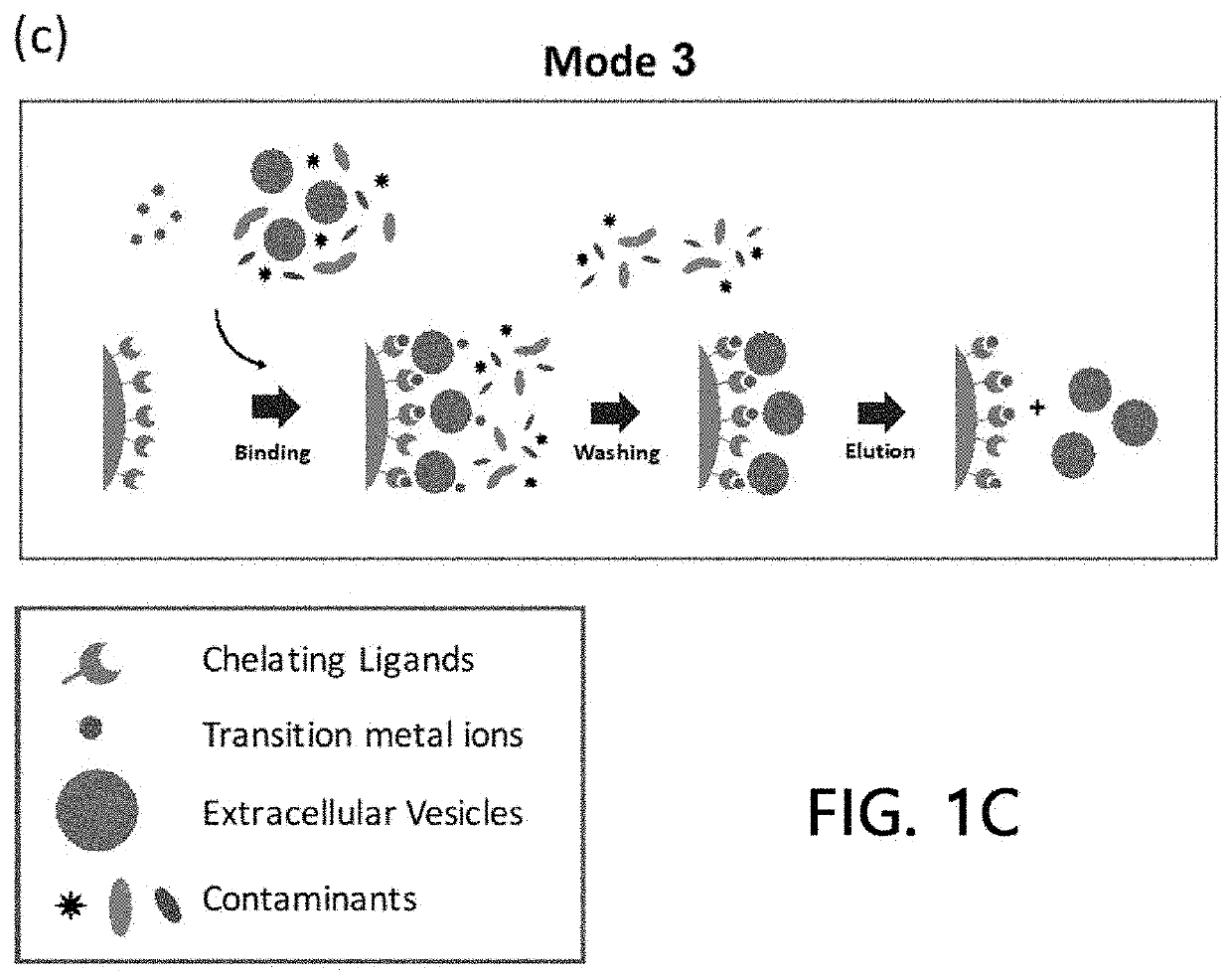Extracellular vesicle isolation method using metal
a technology of extracellular vesicles and metals, applied in the field of metal isolating extracellular vesicles, can solve the problems of large amount of samples required, excessive amount of labor and time, and large amount of labor and time, and achieve rapid and effective isolation of extracellular vesicles, maximize the efficiency of extracellular vesicles, and efficient isolating extracellular vesicles
- Summary
- Abstract
- Description
- Claims
- Application Information
AI Technical Summary
Benefits of technology
Problems solved by technology
Method used
Image
Examples
example 1
ion and Analysis of Sample Extracellular Vesicles
[0078]1-1. Isolation and Purification of Sample Extracellular Vesicles
[0079]Remaining cells and precipitate were removed by centrifugation (repeated twice in total) of a freshly obtained culture solution of a colorectal cancer cell line SW480 at 500×g for 10 minutes. A precipitate was removed again by centrifugation (repeated twice in total) of the supernatant at 2,000×g for 20 minutes.
[0080]In order to perform the Pt purification and precipitation of extracellular vesicles, which is present in the supernatant, a solution for inducing precipitation of extracellular vesicles (8.4% polyethylene glycol 6000, 250 mM NaCl, 20 mM HEPES, and pH 7.4) was added to the supernatant and the resulting mixture was stored in a refrigerator for 16 hours, the precipitated extracellular vesicles were then harvested by centrifugation at 12,000×g for 30 minutes and dissolved in a HEPES-buffered saline (20 mM HEPES, 150 mM NaCl, and pH 7.4).
[0081]In order...
example 2
spect of Sample Extracellular Vesicles to Stationary Phase in the Absence of Metal
[0092]After sample extracellular vesicles (4×1010 particles) were loaded onto a column (1 ml) filled with a stationary phase (IDA-Sepharose) using HEPES buffer solution for 5 minutes using an HPLC system, they were washed with the same buffer solution for another 5 minutes. Then, chromatography was attained on column with concentration gradient at a pH of 7.2 using 0 to 500 mM imidazole / HEPES buffer solution for a 20 column volume, and eluates of all the processes including binding and washing processes were fractionated into 1-ml fractions, respectively.
[0093]A binding aspect of extracellular vesicles to the stationary phase was analyzed by performing a chromatogram analysis (absorbances at 260 nm and 280 nm were measured, respectively), a nanoparticle analysis, and sandwich ELISA on the fractionated eluate by the methods as described above, respectively. The results are illustrated in FIGS. 7 and 8. ...
example 3
of Affinity of Sample Extracellular Vesicles for Cu(II)
[0094]After 0.5 ml of 500 mM Cu(II) ions were bound to a column (1 ml) filled with a stationary phase (IDA-Sepharose) using an HPLC system, non-bound residues were washed off with HEPES buffer solution of a 20 column volume.
[0095]After sample extracellular vesicles (4×1010 particles) were loaded onto the Cu(II) ions-bound stationary phase column using HEPES buffer solution for 5 minutes, the sample extracellular vesicles were washed with the same buffer solution for another 5 minutes. Eluates of all the processes including binding and washing processes were fractionated into 1-ml fractions, respectively, with a concentration gradient at a pH of 7.2 using 0 to 500 mM imidazole / HEPES buffer solution for a 20 column volume. A binding aspect of extracellular vesicles to the stationary phase was analyzed by performing a chromatogram analysis (absorbances at 260 nm and 280 nm were measured, respectively), a nanoparticle analysis, and ...
PUM
| Property | Measurement | Unit |
|---|---|---|
| sizes | aaaaa | aaaaa |
| pH | aaaaa | aaaaa |
| pH | aaaaa | aaaaa |
Abstract
Description
Claims
Application Information
 Login to View More
Login to View More - R&D
- Intellectual Property
- Life Sciences
- Materials
- Tech Scout
- Unparalleled Data Quality
- Higher Quality Content
- 60% Fewer Hallucinations
Browse by: Latest US Patents, China's latest patents, Technical Efficacy Thesaurus, Application Domain, Technology Topic, Popular Technical Reports.
© 2025 PatSnap. All rights reserved.Legal|Privacy policy|Modern Slavery Act Transparency Statement|Sitemap|About US| Contact US: help@patsnap.com



